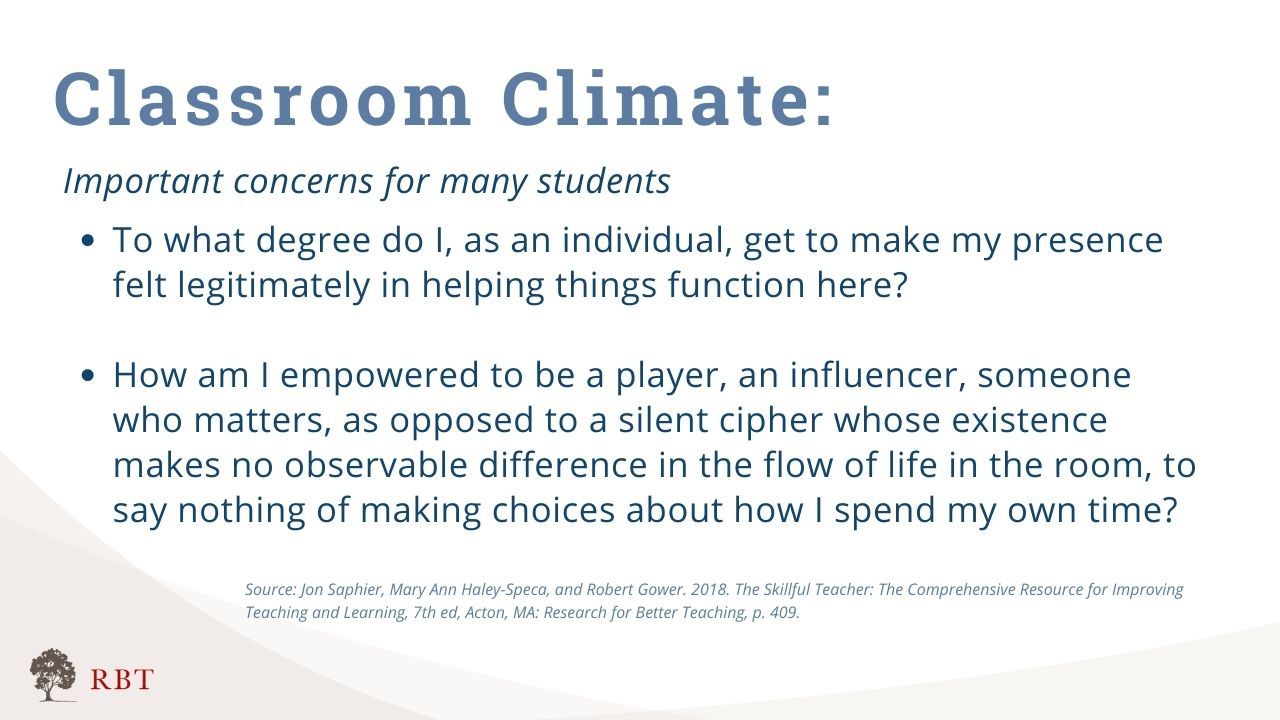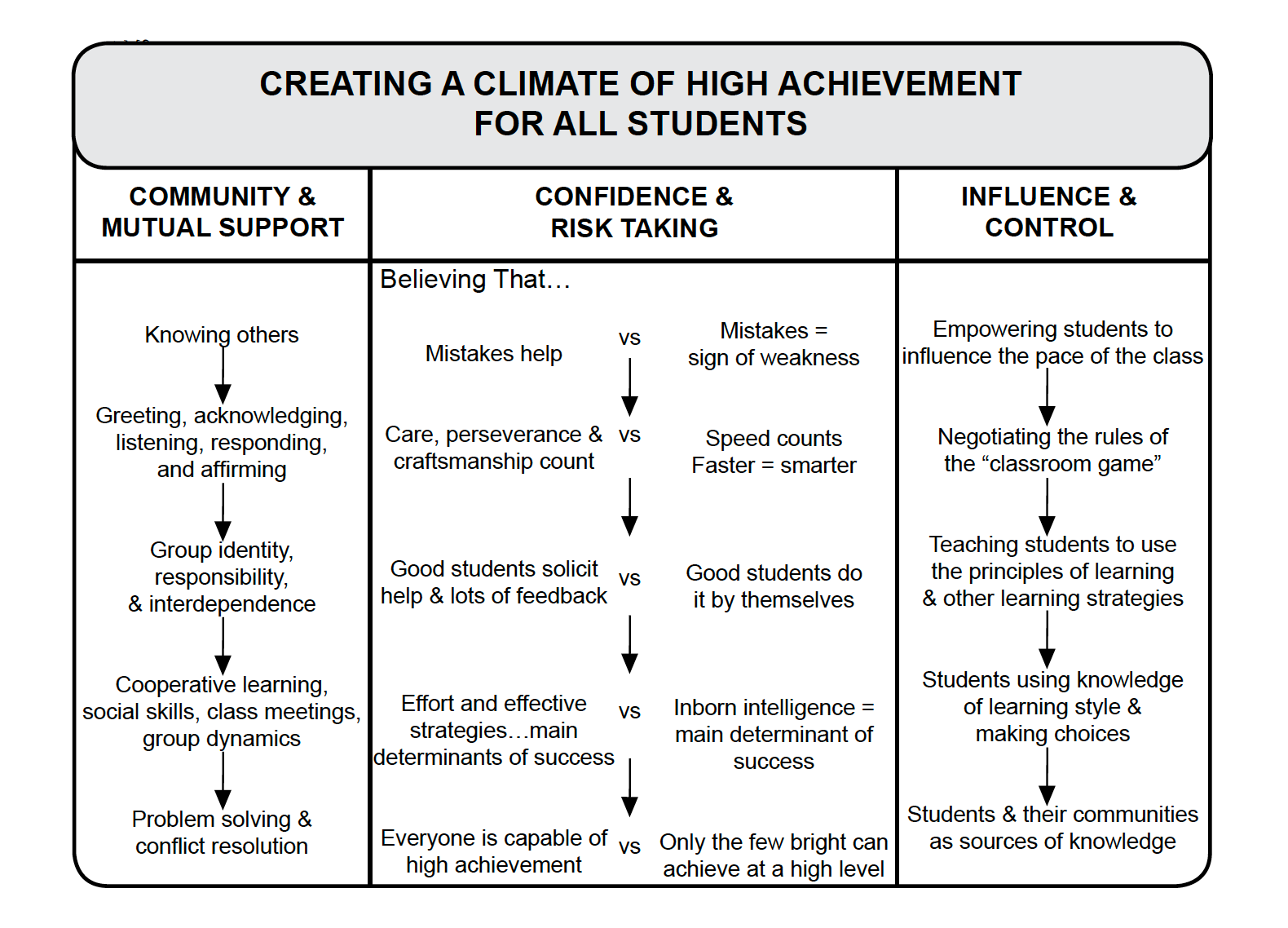Interview - Shelley Berman - A Comprehensive Approach to SEL for Teachers and Leaders
Dr. Sheldon (Shelley) Berman has been a teacher, president of a non-profit organization, and superintendent throughout his distinguished career of over 45 years. Dr. Berman is a pioneer in social emotional learning in education.
In this two part interview, A Comprehensive Approach to SEL for Teachers and Leaders, RBT Founder Dr. Jon Saphier interviews Dr. Berman about his insights into social emotional learning and how educators can start implementing SEL practices that have a lasting impact.
In 1981, Dr. Berman founded and served as the president of the organization Educators for Social Responsibility (now called Engaging Schools). On January 1, 2021, Dr. Sheldon H. Berman was appointed AASA’s Lead Superintendent for Social-Emotional Learning. In this role, Dr. Berman is leading AASA’s SEL Cohort of school districts and providing direct consultation and support to districts intent on deepening their SEL implementation.
Prior to his work with AASA, he served as superintendent in four school districts over 28 years:
- Andover Public Schools in Massachusetts from July 1, 2015 to December 31, 2020.
- Eugene (Oregon) School District from July 2011 to June 2015.
- Jefferson County Public Schools in Louisville, Kentucky, for 4 years
- Hudson (Massachusetts) Public Schools for 14 years.
In each of these roles, Dr. Berman initiated innovations in many areas including social-emotional learning and service learning, and received numerous awards for his work.
Learn more about Dr. Berman here.
His new book, The Ethical Educator: Pointers & Pitfalls for School Administrators, is available for pre-order here.
In this series:
1. Shelley Berman - Part I Full Interview
In Part I of this video interview Jon Saphier and Shelley Berman discuss what Social Emotional Learning really is when you take a comprehensive view of it.
2. Shelley Berman - Part II Full Interview
In Part II of this video interview Jon Saphier and Shelley Berman discuss how to get started with SEL as a teacher, leader, school, or district.
3. Part 1.1: Shelley Berman - The Overall Approach
This section addresses the overall approach.
4. Part 1.2: Shelley Berman - Be Careful of "Programs"
This section speaks about the role of programs.
5. Part 1.3: Shelley Berman - Discipline and SEL
This section addresses how SEL influences classroom behaviors.
6. Part 1.4: Shelley Berman - Culturally Responsive Pedagogy & SEL
This section addresses how the core to SEL is being learner-centered, making students feel known and valued.
7. Part 1.5: Shelley Berman - Choice, Voice, & Student Empowerment
This section addresses the importance of student ownership and collective success.
8. Part 1.6: Shelley Berman - Importance of Adult Modeling
This section addresses the importance of the adults taking part in the process.
Currently watching
9. Part 1.7: Shelley Berman - Educate the Adults
This section is about how the entire school community, including the adults, need support with SEL.
10. Part 2.1: Shelley Berman - Where to Start as a Teacher
This section is about starting with pedagogy vs. curriculum.
11. Part 2.2: Shelley Berman - Service Learning
This section is about exposing students to meaningful experiences outside of the classroom.
12. Part 2.3: Shelley Berman - Inquiry Learning
This section is about giving students the opportunity to learn in ways that are constructive for them.
13. Part 2.4: Shelley Berman - Start with Success
This section is about how it is important to start off with something where everyone can see the benefit.
14. Part 2.5: Shelley Berman - Identify Champions Early
This section is about identifying champions who will help carry the momentum.
15. Part 2.6: Shelley Berman - RBT's Influence
This section is about how RBT and its framework of generic pedagogy is intimately connected to SEL.
16. Part 2.7: Shelley Berman - Dealing with Resistance
This section is about how to deal with resistance along the way.
17. Part 2.8: Shelley Berman - Start With the Basics
This section is about how although the SEL field can seem complex and complicated, you just need to start with the basics and the rest will follow.
Additional Resources Mentioned in the Interview


Source: Jon Saphier, Mary Ann Haley-Speca, and Robert Gower. 2018. The Skillful Teacher: The Comprehensive Resource for Improving Teaching and Learning, 7th ed, Acton, MA: Research for Better Teaching, p. 410.